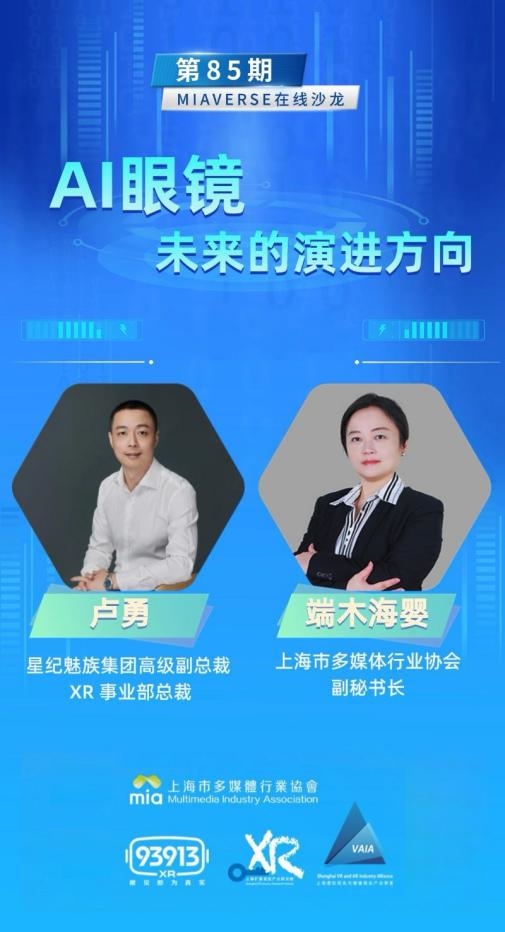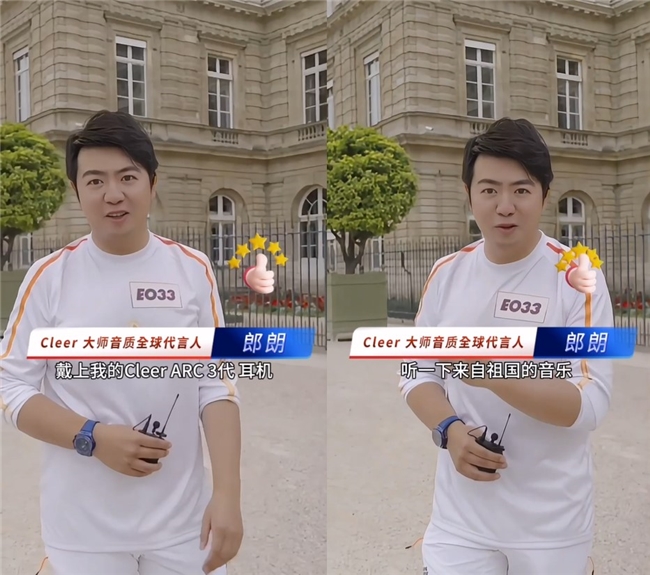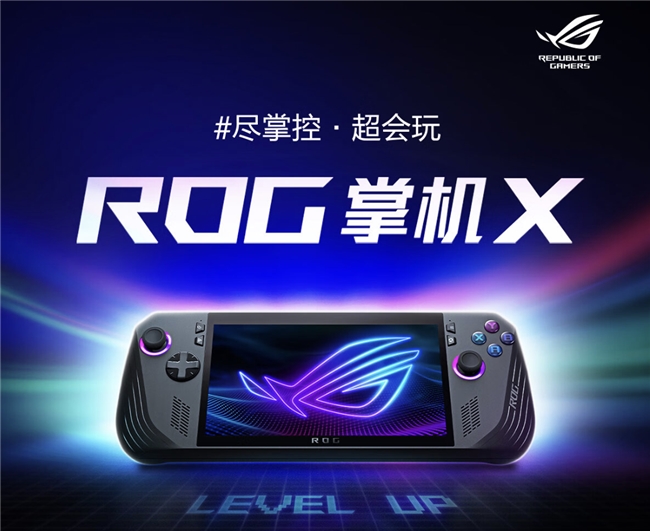German Neutrino Energy Group's Major Investment Boosts Innovative Energy Technologies in China
在全球能源转型的大背景下,清洁、高效的能源技术成为了各国竞相研究和投资的热点。近日,德国中微子能源集团的CEO Holger Thorsten Schubart向欧洲媒体宣布,将向其长期技术合作伙伴——中微子能源集团(亚洲)技术有限公司,投资超过10亿欧元。共同推进创新型能源产品——Neutrinovoltaic和Neutrino Power Cube®的研发与生产,并与中国科学院广州能源研究所合作建立“中微子能源联合实验室”。这一举措不仅彰显了中德两国在能源技术领域的深厚合作关系,更预示着一种全新的能源产品即将崭露头角。此项巨额投资不仅彰显了双方坚实的商业伙伴关系,更将通过中国的一带一路合作倡议,推动中微子能源在全球范围内的技术研发与大规模生产及应用。
In the context of the global energy transition, clean and efficient energy technologies have become a focal point of research and investment worldwide. Recently, Holger Thorsten Schubart, CEO of the German Neutrino Energy Group, announced to European media that the company will invest over 1 billion euros in its long-term technology partner, Neutrino Energy Group (Asia) Technology Co., Ltd. This collaboration aims to advance the development and production of innovative energy products, such as Neutrinovoltaic and Neutrino Power Cube®, and to establish the "Neutrino Energy Joint Laboratory" in partnership with the Guangzhou Institute of Energy Conversion, Chinese Academy of Sciences. This move not only highlights the strong cooperative relationship between Germany and China in the energy technology field but also heralds the emergence of a new type of energy product. This substantial investment underscores the solid business partnership between the two parties and will, through China's Belt and Road Initiative, promote the global development, large-scale production, and application of neutrino energy technologies.
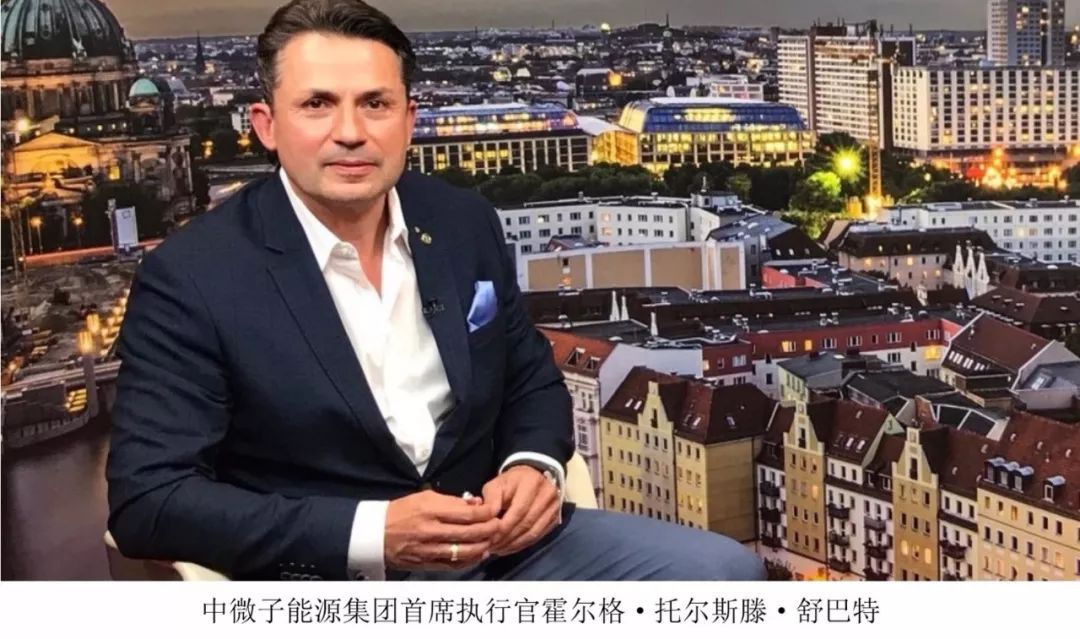
一、德国中微子能源集团的投资决策与合作伙伴选择
德国中微子能源集团作为欧洲领先的能源技术研发企业,一直致力于探索更加高效、环保的能源利用方式。在经过深入的市场调研和技术评估后,该集团决定将其创新型产品Neutrinovoltaic和Neutrino Power Cube以及应用产品的生产基地设立在中国深圳,并与中微子能源集团(亚洲)技术有限公司达成友好商业合作。
这一决策的背后,既体现了德国中微子能源集团对中国市场潜力的充分认可,也彰显了其对合作伙伴技术实力和生产能力的信任。中微子能源集团(亚洲)技术有限公司作为中国在新能源领域的佼佼者,拥有高素质的研发团队和行业生产营销的丰富经验,为双方的合作奠定了坚实基础。
I. Investment Decision and Partner Selection by the German Neutrino Energy Group
As a leading energy technology research and development enterprise in Europe, the German Neutrino Energy Group has been dedicated to exploring more efficient and environmentally friendly ways of utilizing energy. After conducting extensive market research and technical evaluation, the group decided to establish the production base for its innovative products, Neutrinovoltaic and Neutrino Power Cube, as well as related application products, in Shenzhen, China. The group has also entered into a friendly business cooperation with Neutrino Energy Group (Asia) Technology Co., Ltd.
This decision reflects the German Neutrino Energy Group's full recognition of the potential of the Chinese market and its confidence in the technical strength and production capabilities of its partner. Neutrino Energy Group (Asia) Technology Co., Ltd., as a leader in the new energy sector in China, boasts a highly qualified R&D team and extensive experience in industry production and marketing, providing a solid foundation for the collaboration between the two parties.
创新型产品Neutrinovoltaic和Neutrino Power Cube®的材料、结构与性能
Neutrinovoltaic和Neutrino Power Cube作为德国中微子能源集团的创新型产品,其独特的材料和结构设计赋予了它们卓越的能源转换性能。这两款产品均采用了石墨烯(石墨单原子层)和掺杂硅交替层的多层纳米材料,这种材料组合能够高效地将中微子、以及不可见光、电磁辐射能转化为电能。
石墨烯作为一种新型的二维材料,以其出色的光学性能、导热性、导电性和机械强度而备受关注。在Neutrinovoltaic和Neutrino Power Cube®中,石墨烯与掺杂硅交替层叠加,形成了独特的多层纳米结构。这种结构不仅增强了材料的整体稳定性,还大大提高了能源转换效率。
Neutrino Power Cube®作为一款设计紧凑、高转化效率的能源设备,其一个基本单元一天可以产生5至6千瓦的净功率输出。更为引人注目的是,Neutrino Power Cube®所产生的电能价格仅为太阳能电池板发电价格的1/3,这无疑为其在市场上的推广和应用提供了有力支持。
Neutrinovoltaic在标准条件下,一个200x300mm的基础单元能够稳定输出1.5V电压和2A电流。这一稳定而可靠的能源输出,为小型电子设备提供了持续且环保的电力支持。
(以上技术性能参数引用自https://neutrino-energy.com站内公开文献,可自信查阅核实)
II. Materials, Structure, and Performance of the Innovative Products Neutrinovoltaic and Neutrino Power Cube®
Neutrinovoltaic and Neutrino Power Cube®, as innovative products of the German Neutrino Energy Group, feature unique material and structural designs that confer exceptional energy conversion performance. Both products utilize multilayer nanomaterials composed of alternating layers of graphene (single-atom-thick layers of graphite) and doped silicon. This material combination efficiently converts neutrinos, as well as invisible light and electromagnetic radiation, into electrical energy.
Graphene, a novel two-dimensional material, is renowned for its outstanding optical properties, thermal conductivity, electrical conductivity, and mechanical strength. In Neutrinovoltaic and Neutrino Power Cube, the stacking of graphene with doped silicon forms a unique multilayer nanostructure. This structure not only enhances the overall stability of the material but also significantly boosts energy conversion efficiency.
Neutrino Power Cube®, a compact and high-efficiency energy device, can generate a net power output of 5 to 6 kilowatts per basic unit per day. Even more striking is that the cost of electricity generated by Neutrino Power Cube® is only one-third of that generated by solar panels, providing robust support for its market promotion and application.
Under standard conditions, a basic unit of Neutrinovoltaic measuring 200x300mm can steadily output 1.5V of voltage and 2A of current. This stable and reliable energy output offers continuous and eco-friendly power support for small electronic devices.
(The above technical performance parameters are quoted from https://neutrino-energy.com On site public literature, can be confidently checked and verified)
宇宙粒子中微子通过石墨烯波转换电能的工作原理
技术背景介绍:中微子能源技术充分利用石墨烯这种神奇的材料。
石墨烯(Graphene)是碳的同素异形体,碳原子以sp²杂化键合形成单层六边形蜂窝晶格石墨烯,碳原子处于 sp² 杂化状态,并通过六边形二维晶格中的 σ 键和 π 键连接。 利用石墨烯这种晶体结构可以构建富勒烯(C60)、石墨烯量子点,碳纳米管、纳米带、多壁碳纳米管和纳米角。堆叠在一起的石墨烯层(大于10层)即形成石墨,层间通过范德华力保持在一起,晶面间距0.335纳米。 石墨烯具有优异的光学、电学、力学特性,在材料学、微纳加工、能源、生物医学和药物传递等方面具有重要的应用前景,被认为是一种未来革命性的材料。
英国曼彻斯特大学物理学家安德烈·盖姆和康斯坦丁·诺沃肖洛夫,由于成功从石墨中分离出石墨烯(2004)并在单层和双层石墨烯体系中分别发现了整数量子霍尔效应及常温条件下的量子霍尔效应(2009),而获得2010年度诺贝尔物理学奖。
(以上技术参数引用自https://neutrino-wiki.com站内公开文献,可自信查阅核实)
III. Working Principle of Converting Cosmic Neutrinos into Electrical Energy through Graphene Waves
Technical Background Introduction: Neutrino Energy Technology Fully Utilizes the Magical Material Graphene.
Graphene is an allotrope of carbon where carbon atoms form a single-layer hexagonal honeycomb lattice through sp² hybrid bonds. The carbon atoms are in an sp² hybridized state and are connected by σ and π bonds in the hexagonal two-dimensional lattice. This crystal structure of graphene can be used to construct fullerene (C60), graphene quantum dots, carbon nanotubes, nanoribbons, multi-walled carbon nanotubes, and nanocones. When graphene layers are stacked together (more than 10 layers), they form graphite, held together by van der Waals forces with an interlayer spacing of 0.335 nanometers.
Graphene exhibits exceptional optical, electrical, and mechanical properties, offering significant applications in materials science, micro-nano processing, energy, biomedicine, and drug delivery, and is considered a revolutionary material of the future.
British physicists Andre Geim and Konstantin Novoselov from the University of Manchester were awarded the 2010 Nobel Prize in Physics for successfully isolating graphene from graphite in 2004. They also discovered the integer quantum Hall effect in single-layer and bilayer graphene systems and the quantum Hall effect under room temperature conditions in 2009.
(The above technical performance parameters are quoted from https://neutrino-energy.com On site public literature, can be confidently checked and verified)
力学结构:是已知强度最高的材料之一,同时还具有很好的韧性,且可以弯曲,石墨烯的理论杨氏模量达1.0TPa,固有的拉伸强度为130GPa。而利用氢等离子改性的还原石墨烯也具有非常好的强度,平均模量可达0.25TPa。
电子效应:石墨烯在室温下的载流子迁移率约为15000cm2/(V·s),这一数值超过了硅材料的10倍,是已知载流子迁移率最高的物质锑化铟(InSb)的两倍以上。在某些特定条件下如低温下,石墨烯的载流子迁移率甚至可高达250000cm2/(V·s)。与很多材料不一样,石墨烯的电子迁移率受温度变化的影响较小,50~500K之间的任何温度下,单层石墨烯的电子迁移率都在15000cm2/(V·s)左右。
石墨烯中电子载体和空穴载流子的半整数量子霍尔效应可以通过电场作用改变化学势而被观察到,而科学家在室温条件下就观察到了石墨烯的这种量子霍尔效应。 石墨烯中的载流子遵循一种特殊的量子隧道效应,在碰到杂质时不会产生背散射,这是石墨烯局域超强导电性以及很高的载流子迁移率的原因。石墨烯中的电子和光子均没有静止质量,他们的速度是和动能没有关系的常数。 石墨烯是一种零距离半导体,因为它的传导和价带在狄拉克点相遇。在狄拉克点的六个位置动量空间的边缘布里渊区分为两组等效的三份。相比之下,传统半导体的主要点通常为Γ,动量为零。
热性能:石墨烯具有非常好的热传导性能。纯的无缺陷的单层石墨烯的导热系数高达5300W/mK,高于单壁碳纳米管(3500W/mK)和多壁碳纳米管(3000W/mK)。当它作为载体时,导热系数也可达600W/mK。 此外,石墨烯的弹道热导率可以使单位圆周和长度的碳纳米管的弹道热导率的下限下移。
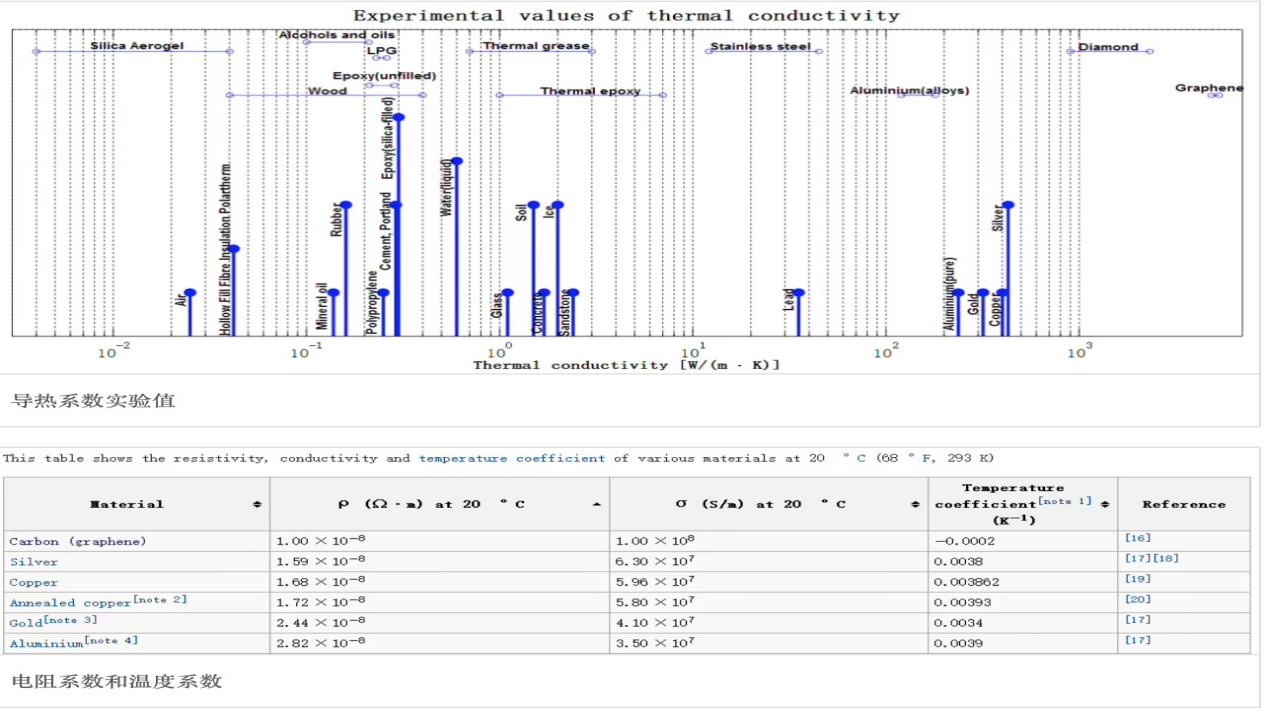
Mechanical Structure: Graphene is one of the strongest known materials with excellent toughness and flexibility. Its theoretical Young's modulus reaches 1.0 TPa, and its inherent tensile strength is 130 GPa. Hydrogen plasma-modified reduced graphene also exhibits high strength, with an average modulus of up to 0.25 TPa.
Electronic Effects: Graphene exhibits a carrier mobility of approximately 15,000 cm²/(V·s) at room temperature, exceeding that of silicon by more than tenfold and more than double that of the highest known mobility material, indium antimonide (InSb). Under specific conditions such as low temperatures, graphene's carrier mobility can reach as high as 250,000 cm²/(V·s). Unlike many materials, graphene's electron mobility is minimally affected by temperature changes, remaining around 15,000 cm²/(V·s) between 50 to 500 K.
In graphene, the half-integer quantum Hall effect of electron carriers and hole carriers can be observed by changing the chemical potential through an electric field. Scientists have observed this quantum Hall effect in graphene even at room temperature. Graphene's carriers follow a unique quantum tunneling effect where they do not undergo backscattering when encountering impurities, which contributes to its localized superconductivity and high carrier mobility. Electrons and photons in graphene lack rest mass, and their velocity is a constant unrelated to kinetic energy. Graphene acts as a zero-distance semiconductor because its conduction and valence bands meet at Dirac points. In the six positions of Dirac points, the edge Brillouin zone of the momentum space is divided into two equivalent parts. In contrast, the primary point of traditional semiconductors is usually Γ, and the momentum is zero.
Thermal Performance: Graphene exhibits excellent thermal conductivity. The thermal conductivity coefficient of a pure, defect-free monolayer graphene reaches 5300 W/mK, surpassing that of single-walled carbon nanotubes (3500 W/mK) and multi-walled carbon nanotubes (3000 W/mK). As a carrier, its thermal conductivity can also reach 600 W/mK. Moreover, the ballistic thermal conductivity of graphene can shift the lower limit of the ballistic thermal conductivity of carbon nanotubes of unit circle and length.
光学特性:石墨烯具有非常良好的光学特性,在较宽波长范围内吸收率约为2.3%,看上去几乎是透明的。在几层石墨烯厚度范围内,厚度每增加一层,吸收率增加2.3%。大面积的石墨烯薄膜同样具有优异的光学特性,且其光学特性随石墨烯厚度的改变而发生变化。这是单层石墨烯所具有的不寻常低能电子结构。室温下对双栅极双层石墨烯场效应晶体管施加电压,石墨烯的带隙可在0~0.25eV间调整。施加磁场,石墨烯纳米带的光学响应可调谐至太赫兹范围。 当入射光的强度超过某一临界值时,石墨烯对其的吸收会达到饱和。这些特性可以使得石墨烯可以用来做被动锁模激光器。 这种独特的吸收可能成为饱和时输入光强超过一个阈值,这称为饱和影响,石墨烯可饱和容易下可见强有力的激励近红外地区,由于环球光学吸收和零带隙。由于这种特殊性质,石墨烯具有广泛应用在超快光子学。石墨烯/氧化石墨烯层的光学响应可以调谐电。 在更密集的激光照射下,石墨烯可能拥有一个非线性相移的光学非线性克尔效应。
Optical Properties: Graphene exhibits excellent optical properties with an absorption rate of approximately 2.3% over a wide wavelength range, making it nearly transparent. Within the thickness range of several layers of graphene, each additional layer increases the absorption rate by 2.3%. Large-area graphene films also possess outstanding optical characteristics, which vary with changes in graphene thickness. This is due to the unusual low-energy electronic structure of single-layer graphene. At room temperature, applying voltage to a dual-gate bilayer graphene field-effect transistor can adjust the bandgap between 0 to 0.25 eV. Applying a magnetic field can tune the optical response of graphene nanoribbons into the terahertz range.
Neutrino Energy Group制造的复合金属纳米材料含有交替涂在金属箔上的石墨烯和硅层,为了降低电流源(电极)的生产成本,载体通常是铝箔。各种可见光、不可见光、电磁辐射和温度的影响,导致“石墨烯”波的出现。这些波可以通过放大显微镜观察到,通过接触硅层,石墨烯释放电子,从而产生电流。石墨烯的主要特性,使其能够用于产生电流,是其原子的振荡增加。现在科学界已经证明,石墨烯不可能存在于二维平面上,而只能存在于三维平面上。来自阿肯色大学的一组科学家对石墨烯进行了研究,石墨烯被放置于铜板上,他们用扫描隧道显微镜观察了原子位置的变化,一个非常有意义的发现,在石墨烯有一个波浪,就像海面上的波浪,这是由于小的自发运动的结合波,并导致更大的自发运动的波出现。一个原子的热位移(原子的布朗运动)与其他原子的热位移相加,产生水平极化的表面波,在声学上被称为列瓦波。由于石墨烯晶体晶格的特殊性,它的原子在串联中振荡,这与液体中分子的自发运动不同。
(以上技术内容引自www.neutrinovoltaic.com站内公开文献,请自行查阅)
The composite metal nanomaterials manufactured by Neutrino Energy Group contain alternating graphene and silicon layers coated on metal foils. In order to reduce the production cost of the current source (electrode), the carrier is usually aluminum foil. Various visible and invisible light, electromagnetic radiation, and temperature effects lead to the emergence of graphene waves. These waves can be observed under a magnifying microscope, and by contacting the silicon layer, graphene releases electrons, generating an electric current. The main characteristic of graphene, which enables it to generate electricity, is the increased oscillation of its atoms. The scientific community has now proven that graphene cannot exist in a two-dimensional plane, but can only exist in a three-dimensional plane. A group of scientists from the University of Arkansas studied graphene, which was placed on a copper plate and observed changes in atomic positions using a scanning tunneling microscope. A very meaningful discovery was that there is a wave in graphene, similar to waves on the sea surface, which is due to small spontaneous binding waves and leads to larger spontaneous waves. The thermal displacement of an atom (the Brownian motion of an atom) is combined with the thermal displacement of other atoms to produce a horizontally polarized surface wave, which is acoustically known as a Levi wave. Due to the special nature of graphene crystal lattice, its atoms oscillate in series, which is different from the spontaneous motion of molecules in liquids.
(The above technical literature is quoted from the publicly available literature on www.meridinovoltaic.com website. Please refer to it yourself.)
阿肯色大学的蒂巴多教授在接受《研究前沿》杂志采访时说:“这是利用二维材料运动作为不竭能源的关键。串联振动在石墨烯板中产生涟漪,从而利用最新的纳米技术从周围空间提取能量。”
Neutrino Energy Group的实验结果得到了ETH(Eidgenössische Technische Hochschule,Zürich)教授Vanessa Wood及其同事的独立验证,结果表明,当材料的尺寸小于10到20纳米,即比人类头发直径小5000倍时,纳米颗粒表面外原子层的波动很大,对这种材料的行为方式起着重要作用。这些原子振动,或“声子”,负责电荷和热量如何在材料中转移。考虑到,例如:如果石墨烯原子的振荡比硅原子的振荡强100倍,那么电磁辐射的外效应频率叠加,包括中微子的作用在内,对石墨烯波振荡的内部频率加强了这种振荡,并导致原子振荡的共振。共振中的原子振荡使电子在接触合金硅时产生更大的输出。
有必要特别注意中微子的影响。 2015 年,诺贝尔物理学奖授予了两个研究中微子特性的实验小组 Super-Kamiokande 和 SNO 的负责人 Takaaki Kajita 和 Arthur B. McDonald。他们的工作有力地证明了中微子的三种味道,它们能够振荡——在飞行中自发地彼此转化。在与基本粒子的反应中诞生的可能是某一类中微子,而在空间中传播的可能是某一质量的中微子。正是质量的证明,即能量的存在,是将中微子能量转化为电流的理论可能性的关键论据。
(以上技术内容www.neutrino-science.com站内公开文献,请自行查阅)
Professor Tibado from the University of Arkansas said in an interview with the magazine Research Frontiers, "This is the key to using the movement of two-dimensional materials as an inexhaustible energy source. Series vibrations create ripples in the graphene plate, thereby extracting energy from the surrounding space using the latest nanotechnology."
The experimental results from the Neutrino Energy Group have been independently verified by Professor Vanessa Wood and her colleagues at ETH (Eidgenössische Technische Hochschule, Zürich). The results show that when the material size is less than 10 to 20 nanometers, which is 5000 times smaller than the diameter of a human hair, the fluctuations in the outer atomic layer of the nanoparticle surface are significant, playing an important role in the behavior of this material. These atomic vibrations, or "phonons," are responsible for how charge and heat are transferred within the material. Considering that, for example, if the oscillation of graphene atoms is 100 times stronger than that of silicon atoms, the external effect frequency of electromagnetic radiation, including the role of neutrinos, reinforces this oscillation on the internal frequency of graphene wave oscillation and leads to resonance of atomic oscillation. Atomic oscillations in resonance cause electrons to produce a greater output when contacting alloy silicon.
It is necessary to pay special attention to the influence of neutrinos. In 2015, the Nobel Prize in Physics was awarded to Takaaki Kajita and Arthur B. McDonald, leaders of the two experimental groups Super-Kamiokande and SNO, for their studies on neutrino properties. Their work strongly demonstrated the three flavors of neutrinos, which can oscillate - spontaneously transform into each other during flight. What is born in the reaction with fundamental particles may be a certain type of neutrino, while what propagates in space may be a neutrino of a certain mass. It is the proof of mass, that is, the existence of energy, that is the key argument for the theoretical possibility of converting neutrino energy into electricity.
(The above technical content can be found in the publicly available literature on www.neutrino-science. com website. Please refer to it yourself.)
直到最近,人们仍然认为中微子不与物质相互作用,宇宙中微子穿透地球,没有遇到任何障碍。但是,橡树岭国家实验室(美国)的 COHERENT 合作的最新出版物使完整的图景成为可能。她的作品汇集了来自四个国家19个研究所的80人,包括俄罗斯(以AI Alikhanov命名的ITEP(NC“库尔恰托夫研究所”)、MEPHI大学和MIPT)。 2017 年的第一次实验,其结果发表在《科学》杂志上,旨在研究中微子与铯和碘原子核的相互作用。由于中微子是电中性的并且与物质的相互作用非常弱,因此观察这种相互作用需要开发探测器技术。由于铯和碘的原子核比较大和重,中微子是电中性的,与物质的相互作用非常弱,原子核与中微子相互作用的反冲非常微弱,得到的结果无法得出最终结论被绘制。因此,研究人员进行了中微子与氩原子核相互作用的实验,氩原子核比铯和碘的原子核轻。发现低能中微子参与与氩原子核的弱相互作用。这个过程称为相干弹性中微子核散射 (CEVNS)。中微子,就像网球击打保龄球一样,“击中”原子的大而重的原子核,并向其传递微量能量。结果,核心几乎在不知不觉中弹跳起来;低能中微子参与与物质原子核的弱相互作用。由于石墨烯是碳,其原子质量比氩原子质量轻,因此中微子与碳核相互作用的影响会比与氩更明显,导致石墨烯原子的振动幅度增加(石墨烯波)。因此上,可以认为以每秒 600 亿个粒子的强度落在地球表面 1 cm2 上的中微子的能量可以转化为电流,这种转化不受天气条件或季节的影响,并在白天和晚上都保持稳定。
Until recently, it was still believed that neutrinos do not interact with matter, and neutrinos in the universe penetrate the Earth without encountering any obstacles. However, the latest publication from the COHERENT collaboration at Oak Ridge National Laboratory (USA) has made a complete picture possible. Her work brings together 80 people from 19 research institutes in four countries, including Russia (ITEP named after AI Alikhanov (NC "Kurchatov Institute"), MEPHI University, and MIPT). The first experiment in 2017, whose results were published in the magazine Science, aimed to study the interaction of neutrinos with cesium and iodine atomic nuclei. Because neutrinos are electrically neutral and their interaction with matter is very weak, observing such interactions requires the development of detector technology. Due to the large and heavy nuclei of cesium and iodine, and the electrically neutral and weakly interacting nature of neutrinos, the recoil of the nuclei interacting with neutrinos is very weak, and the results obtained cannot lead to a final conclusion. Therefore, researchers conducted experiments on the interaction of neutrinos with argon atomic nuclei, which are lighter than cesium and iodine nuclei. It was found that low-energy neutrinos participate in weak interactions with argon nuclei. This process is called Coherent Elastic Neutrino-Nucleus Scattering (CEVNS). Neutrinos, like a tennis ball hitting a bowling ball, "hit" the large and heavy nuclei of atoms and transfer a tiny amount of energy to them. As a result, the core almost imperceptibly bounces up; low-energy neutrinos participate in weak interactions with the nuclei of matter. Because graphene is carbon, and its atomic mass is lighter than that of argon, the effect of neutrinos interacting with carbon nuclei will be more pronounced than with argon, resulting in an increased amplitude of vibration of graphene atoms (graphene wave). Therefore, it can be inferred that the energy of neutrinos falling on 1 cm2 of the Earth's surface at an intensity of 60 billion particles per second can be converted into an electric current, and this conversion is not affected by weather conditions or seasons, remaining stable during both day and night.
瑞士理工学院对 Neutrinovoltaic 技术的独立测试表明,在混凝土掩体和法拉第笼中地下 30-35 米深度的能量电池的测试测试完全排除了除中微子之外的任何辐射对直流电的影响生成过程。在这些条件下,只有中微子可以与测试的纳米材料相互作用。然而,即使在这样的条件下,这些设备也测量到了 2.5-3.0 W 的功率,这是从 A4 纸尺寸的大小的金属箔获得的,该金属箔的一侧涂有多层纳米涂层,由 Neutrino Energy Group 制造。
麻省理工学院也在研究通过使用石墨烯和氮化硼获得直流电的可能性,但其成就和既定目标要温和得多,并且处于初级阶段。虽然需要注意的是,现阶段麻省理工学院仍然只是研究石墨烯以获得直流电。该研究所的科学家目前正在研究使用石墨烯和氮化硼将太赫兹(或 T 射线)波(频率介于微波和红外光之间的电磁波)转化为有用的能量。太赫兹波在我们的日常生活中很普遍,如果使用,它们的集中能量有可能作为替代能源。麻省理工学院的科学家们发现,通过将石墨烯与氮化硼结合,石墨烯中的电子必须扭曲其向一个大方向上的运动。任何传入的太赫兹波都必须像许多微型空中交通管制员一样“携带”石墨烯电子,以便它们可以像直流电一样沿一个方向流过材料。整体效应就是物理学家所说的“倾斜散射”,即电子云在一个方向上偏转其运动。 Neutrino Energy Group 制造的纳米材料中石墨烯层和复合金属掺杂的硅层叠加也发生了类似的机制。麻省理工学院材料研究实验室的主要研究员 Hiroki Isobe 表示:“如果我们能够将这种能量转化为我们日常生活中可以使用的能源,它将有助于解决我们现在面临的能源问题。”
Independent testing of Neutrinovoltaic technology conducted by the Swiss Institute of Technology has shown that tests on energy cells located at a depth of 30-35 meters underground in a concrete bunker and Faraday cage completely exclude the influence of any radiation other than neutrinos on the DC generation process. Under these conditions, only neutrinos can interact with the tested nanomaterials. However, even under such conditions, these devices measured a power output of 2.5-3.0 W, which was obtained from an A4 paper-sized metal foil with one side coated with multiple layers of nanocoating, manufactured by Neutrino Energy Group.
The Massachusetts Institute of Technology (MIT) is also studying the possibility of obtaining DC power through the use of graphene and boron nitride, but its achievements and established goals are much more modest and are in the early stages. It should be noted that at this stage, MIT is still only studying graphene for obtaining DC power. Scientists at the institute are currently researching the use of graphene and boron nitride to convert terahertz (or T-ray) waves (electromagnetic waves with frequencies between microwaves and infrared light) into useful energy. Terahertz waves are common in our daily lives, and if used, their concentrated energy has the potential to be an alternative energy source. MIT scientists have found that by combining graphene with boron nitride, electrons in the graphene must twist their movement in one general direction. Any incoming terahertz waves must "carry" the graphene electrons like many micro air traffic controllers so that they can flow through the material in one direction like DC current. The overall effect is what physicists call "tilt scattering", where the electron cloud deflects its movement in one direction. A similar mechanism occurs in the nanomaterials manufactured by Neutrino Energy Group, where graphene layers and composite metal-doped silicon layers are stacked. Hiroki Isobe, the principal investigator at MIT's Materials Research Laboratory, said, "If we can convert this energy into an energy source that we can use in our daily lives, it will help solve the energy problems we are facing now.
一层石墨烯材料的铝箔片可以产生非常微弱的电流,但我们的任务是创造一种能够稳定输出工作电流的技术产品,并且该产品的尺寸比较紧凑(具有较高的能量转化效率和能量密度)。否则,这项技术就无法在商业上得到应用。这项技术是通过制造多层纳米材料来完成的,通过增加多次输出电流和电压来实现必要的效果。”通过这种硅和石墨烯层的组合,粒子辐射开始了一个谐振过程,然后由一个电转换器储存下来。金属载体的覆盖面为正极,未覆盖面为负极。
多片涂有创新复合金属纳米材料的铝箔片,如同锂离子电池的叠片工艺类似,把极片依次串联组合,构成了一个能量电池单元。当多个电源单元的采用不同的组合连接方式时,形成所需尺寸和功率特性的直流电源。尺寸为9cmX32cmX42cm Neutrinovoltaic电池(尺寸类似旅行小皮箱),输出功率为4.5至5.5千瓦/小时,能量密度达到了375wh/cm3。如此紧凑的尺寸和高转化率,使得Neutrinovoltaic电池用于供电的自主电源成为可能,包括给独立的房屋和电动汽车供电。
A layer of aluminum foil coated with graphene material can generate a very weak current, but our task is to create a compact-sized technical product that can stably output working current (with high energy conversion efficiency and energy density). Otherwise, this technology cannot be commercially applied. This technology is achieved by manufacturing multilayer nanomaterials, increasing the output current and voltage multiple times to achieve the necessary effect." Through this combination of silicon and graphene layers, particle radiation initiates a resonance process, which is then stored by an electrical converter. The covered surface of the metal carrier serves as the positive electrode, while the uncovered surface serves as the negative electrode.
Multiple aluminum foil sheets coated with innovative composite metal nanomaterials are serially connected in sequence, similar to the stacking process of lithium-ion batteries, forming an energy cell unit. When multiple power units are connected in different combinations, a DC power supply with the required size and power characteristics is formed. The Neutrinovoltaic battery, with a size of 9cm x 32cm x 42cm (similar to a small travel suitcase), has an output power of 4.5 to 5.5 kilowatt-hours and an energy density of 375wh/cm3. Such a compact size and high conversion rate make it possible for the Neutrinovoltaic battery to be used as an autonomous power supply, including powering independent houses and electric vehicles.
小结:在Neutrinovoltaic和Neutrino Power Cube中,宇宙粒子中微子流、不可见光、电磁辐射通过石墨烯波转换电能的工作原理堪称神奇。当宇宙中的中微子流经石墨烯层时,它们与石墨烯中的原子发生相互作用。这一过程中,中微子的能量被传递给石墨烯原子,激发了石墨烯内部的电子运动。由于石墨烯原子间的特殊连接方式,这些激发态的电子能够在整个石墨烯层中自由移动,会引发石墨烯波的出现。这些波动可以通过特定的显微镜观察到,并在石墨烯与硅层接触时释放电子,从而产生电流。在室温下,石墨烯中的电子和“空穴”以惊人的速度移动,这种高效的电荷传输能力正是实现能源转换的关键。
本发明受国际专利WO2016142056A1的保护。
Summary: The working principle of converting cosmic neutrino flow, invisible light, and electromagnetic radiation into electrical energy through graphene wave conversion in Neutrinovoltaic and Neutrino Power Cube is remarkable. When neutrinos from the universe flow through the graphene layer, they interact with the atoms in the graphene. In this process, the energy of the neutrinos is transferred to the graphene atoms, exciting the electronic movement within the graphene. Due to the special bonding between graphene atoms, these excited electrons can freely move throughout the entire graphene layer, triggering the emergence of graphene waves. These fluctuations can be observed through a specific microscope, and when the graphene comes into contact with the silicon layer, electrons are released, generating a current. At room temperature, electrons and "holes" in graphene move at astonishing speeds, and this efficient charge transfer capability is the key to achieving energy conversion.
This invention is protected by the international patent WO2016142056A1.
四、投资推动技术创新与产业发展
德国中微子能源集团的巨额投资将为Neutrinovoltaic和Neutrino Power Cube的研发和产业化提供强大的动力。这笔资金将主要用于产品研发中心的建立和生产基地的扩建,以推动技术的持续优化和创新。
随着资金的注入和研发团队的壮大,我们有理由相信,这两款创新型产品将在不久的将来实现大规模生产并推向市场。它们的广泛应用不仅有望缓解全球能源紧张的局面,还将为环保和可持续发展做出积极贡献。
IV. Investment Promotes Technological Innovation and Industrial Development
The huge investment from the German Neutrino Energy Group will provide a strong impetus for the research, development, and industrialization of Neutrinovoltaic and Neutrino Power Cube. This funding will be primarily used for the establishment of a product research and development center and the expansion of production bases to promote continuous technology optimization and innovation.
With the injection of funds and the expansion of the research and development team, we have reason to believe that these two innovative products will achieve mass production and be brought to the market in the near future. Their widespread application is not only expected to alleviate the global energy shortage but also make a positive contribution to environmental protection and sustainable development.
五、展望未来
在全球能源转型的大背景下,德国中微子能源集团与中微子能源集团(亚洲)技术有限公司的合作无疑为新能源技术的发展注入了新的活力。随着双方合作的深入和技术的不断创新,我们有理由期待更多高效、环保的能源产品问世,共同推动全球能源结构的优化和可持续发展。
V. Looking Forward to the Future
In the context of global energy transformation, the cooperation between the German Neutrino Energy Group and Neutrino Energy Group (Asia) Technology Co., Ltd. has undoubtedly injected new vitality into the development of new energy technology. With the deepening of cooperation between the two parties and continuous technological innovation, we have reason to expect more efficient and environmentally friendly energy products to emerge, jointly promoting the optimization and sustainable development of the global energy structure.
免责声明:市场有风险,选择需谨慎!此文仅供参考,不作买卖依据。

